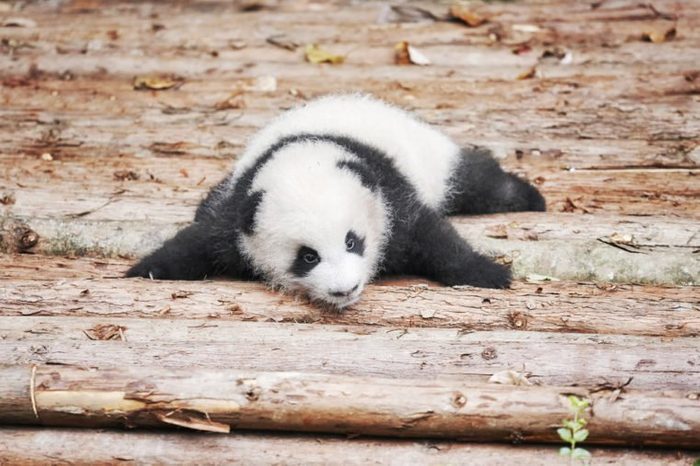
1. Pandas Grow from Tiny to Massive in a Few Short Years
Pink, blind, and hairless, panda infants weigh just three to five ounces and have been compared in size to a stick of butter. But within a year, pandas tip the scales at around 100 pounds; fully mature pandas can be up to six feet long and reach 350 pounds.

2. Pandas Can Be Dangerous
Sure, panda facts are usually light-hearted and fun, but don’t be misled by the cute faces and cuddly-looking fur. These bears could not only crush you with their heavy bodies, but they also have very strong teeth and jaw muscles that they use to crush tough bamboo.

3. Pandas Don’t Hibernate
Pandas don’t settle down for a winter slumber like most other bears. Instead, they head down the mountains where they live to find warmer temperatures.

4. Pandas Value Alone Time
Adult pandas don’t spend much time interacting with each other, and they’re generally quiet animals. However, they do occasionally communicate through scent marks, squeaking, barking, growling, or huffing.

5. Pandas Play an Important Role in Their Habitat
Pandas love all the bamboo available in their forest homes, but they also have a crucial role in the forest’s ecosystem by spreading seeds that encourage vegetation growth. This helps ensure the forests’ other residents, like multicolored pheasants, blue dwarf sheep, and the endangered golden monkey, also have a suitable home.

6. We May Finally Know Why Pandas Are Black and White
For years, scientists speculated as to why panda fur is coloured the way it is. One belief was that it helped them camouflage in forests of bamboo and in the snow, and another suggested that it helped them maintain an appropriate body temperature, since black absorbs heat and white reflects it. But in 2017, a study published in the journal Behavioral Ecology claimed that the camouflage theory is in fact correct, stating that the white fur helps the animal hide in snowy habitats while the black fur is used for camouflage and communication. The study authors believe their black ears are a sign of aggression toward predators and the black fur around their eyes helps them identify other pandas.

7. Some Pandas Don’t Know How to Have Sex
Giant pandas may be unknowingly contributing to their place on the endangered species list. Female pandas are able to mate only two or three days per year, and some males don’t know how to do the deed. Tian Tian and Mei Xiang, a pair of pandas who live together at the National Zoo in Washington, DC haven’t naturally conceived a cub in 13 years. Says David Wildt, the head of the Center for Species Survival at the zoo, “Rather than pulling Mei Xiang toward his lap, Tian Tian steps on her back and stands there like a man who has just opened a large box from IKEA and has no idea what to do next.”

.jpg)
.jpg)
.jpg)


No comments:
Post a Comment
Thanks For Your Comments